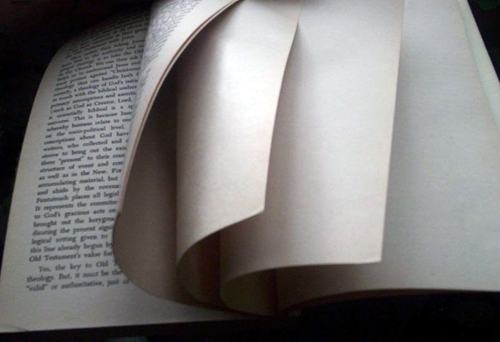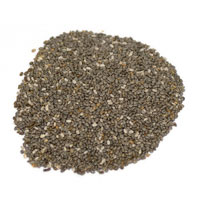Today’s look back takes us only three hundred sixty-five days into the past. One year ago this day, I wrote about wanting to eat better. And eat better I did. I feel much better, much more in shape, much lighter (nearly thirty pounds!) and I enjoy running, and a much earlier schedule. Of note on this day is another goal-related post from 2012 titled “Pacific Time Zone Night Owl” … it seems that in 2013 I accomplished that goal (and more) also! It was apparently a successful year for personal goals!
Eating Better
 It’s not a New Year’s Resolution, really, but since around January 3rd or so, I’ve been eating better—and I’m already really noticing the effects of it!
It’s not a New Year’s Resolution, really, but since around January 3rd or so, I’ve been eating better—and I’m already really noticing the effects of it!
Around the holidays (which, in America means October 31st through January 1st, give or take a few days or weeks) we are inundated with all kinds of wonderful foods, and maybe especially sugary food. There are the Halloween candies, then Thanksgiving pies and other desserts, followed by a month of cookies, hot chocolate (and other warm, sweet beverages) and plenty of candy.
It’s no wonder so many Americans make food-related New Year’s Resolutions!
Well this year, following a long time (not sure how long, really) of having basically no restraints whatsoever on my daily food consumption—and, certainly feeling appropriately bad from that—I decided to exercise my personal discipline a bit following the ubiquity of holiday sugary treats.
(Note: in the Campbell home, it goes a tad longer as Three King’s Day (January 6th) is celebrated here annually, with those three kings bringing several more sweet treats and depositing them in our waiting foot wear.)
I had been noticing a feeling of “heaviness” most of my days, and maybe especially in the mornings, so I decided to do the following:
-
Remove most sugar from my diet.
I have done a few “sugar fasts” in my life, and always with very favorable results. Usually after just a few days to a week I really start feeling better. Generally that means slightly less “heavy” (or, lethargic?) and, contrastingly, having more energy. This time I decided not to just go completely off of sugar because (1) I like sugary things, and (2) I figured a little is not really a problem. So far, I think that is correct: I’m feeling much better in the energy and “heaviness” department and still consuming some sugar.
-
Do not eat anything after 10pm.
This one came from a very regular routine I had fallen into regarding when I would eat daily. I generally would eat lunch, dinner, and then a rather large meal around midnight or so. (I had also gotten on a late night schedule!) What I also noticed was that these late night meals either kept me awake longer than usually necessary, or they would actually “put me to sleep” and I’d wake up feeling just … bad! It was that “heaviness” again, and also often finding it much harder to wake up.
A few comments on the above. First, the “heaviness” I’m talking about is not (I don’t think) merely a body mass/weight thing. I think it was/is more than that. It seems to be more of a general “energy” feeling. Second, the “no food after 10pm” is not hard and fast like with the Mogwai where any deviation from the rule would be catastrophic. It’s really just a general guideline, and I’ve had some carrots sticks when I had some work to do late night, or even a salad one night (I was really hungry!)
The results? I can’t say other than I just feel better. I feel more energy. I feel much better in the mornings. I noticed that I even feel better after eating. (Is that possible?) I am also enjoying the feeling of being hungry and telling my body, Not right now…
It’s certainly not easy all the time. I’m pretty OK eating or not eating, so perhaps this is not a difficult area of self discipline for me. But I know there have been many times where I have nearly physically willed myself away from the sugary snack (which, have you noticed, are so easy and available to eat?) as well as avoiding the urge to late night snack.
And after three weeks or so, I couldn’t hope for better results all around.
I’m not trying to “lose weight”, or any similar dieting goal. I am just hoping to feel better by eating better, and… it’s working!
Now I’m also thinking about what other areas of self discipline I could tackle next. I’m thinking maybe just time management. There are so many things to do, perhaps there are ways I could better spend my time? (Maybe that will be a blog post somewhere down the line.)
For now, I leave you with an article I came across today. (I um, kinda… “used” the photo from it here? Thanks, Forbes!) It’s titled “What Eating Too Much Sugar Does To your Brain“. Seems related, no?
Enjoy, if you have time to read it, and hopefully you’re also enjoying some self-discipline success, food-related or otherwise.
If you have a similar experience, or anything to add, I’d love to hear it. Please leave your thoughts/story/comments below!
OTHER POSTS from JANUARY 24th
- 2012 – Pacific Time Zone Night Owl
- 2007 – Amazing Guitar
- 2005 – A Winning Attitude? (for the sports fans out there…)
- 2005 – I Call You Friends (this post became a chapter in my first book)
- 2005 – New Features of This Blog
- 2005 – GregsHead.net! (the first post at the new domain!)



